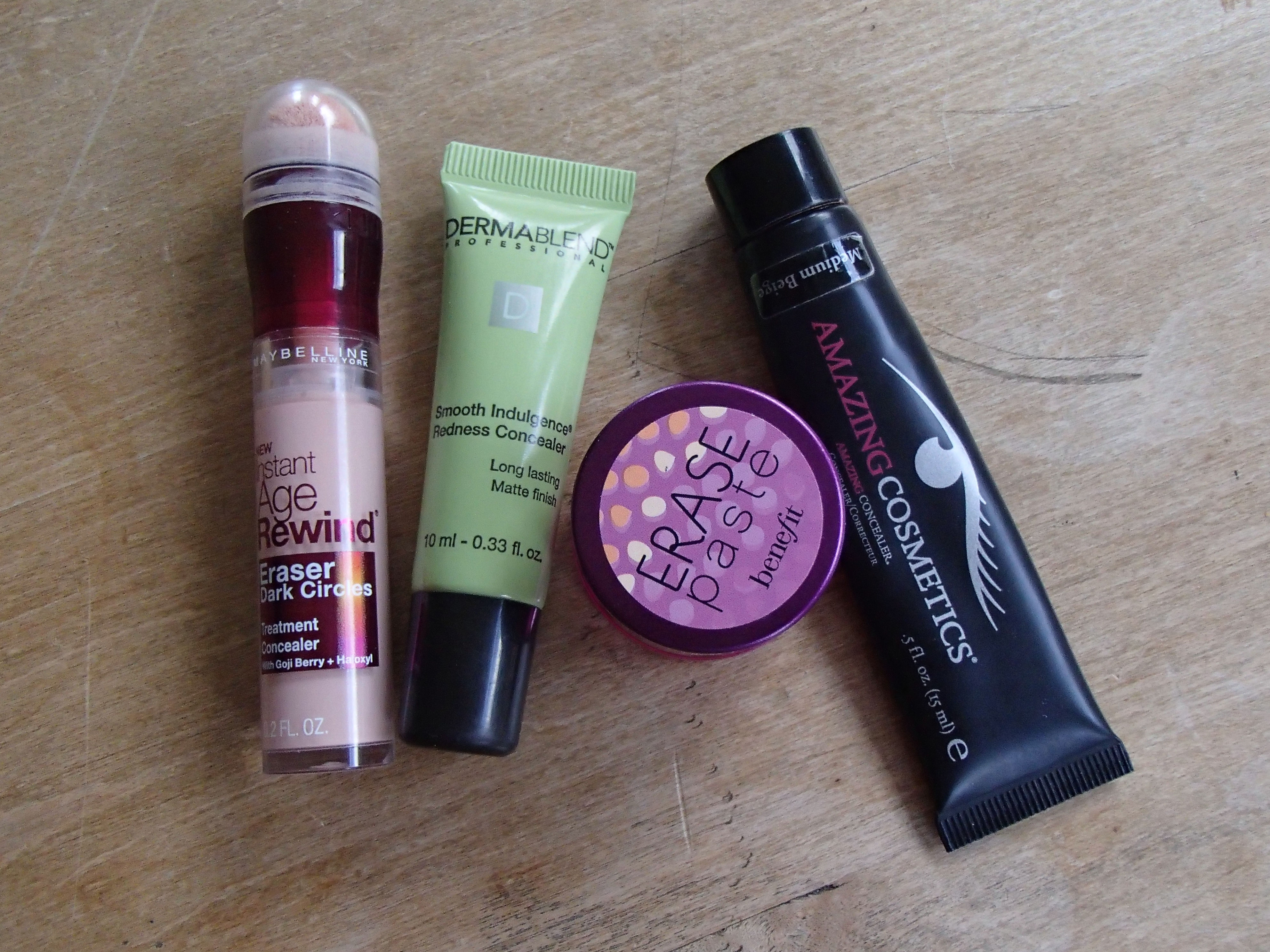
How to Makeup: Concealer
Part three of the How to Makeup series.
On our quest for awesome-looking skin, let’s face it (see what I did there?) – sometimes foundation just isn’t enough.
Concealer:
What is it?
Concealer is a highly pigmented face product used to camouflage obvious skin discolorations. It’s usually a skin-tone color, but several color-correcting versions are also available.
Why might I want to use this stuff?
Concealer is the way to go when you have discoloration that your foundation just won’t cover without looking like a mask. Some of the candidates for concealer would be acne blemishes, dark undereye circles, hyperpigmentation (such as post-inflammatory hyperpigmentation, melasma, etc), birthmarks, tattoos, bruises and the like. I’m pretty sure I’ll end up writing this in every section of this guide, but not everyone needs concealer all the time. Most of the time I don’t bother with concealer except under my eyes; yes, you can still see some blemishes and dark spots peeking through my foundation, but I don’t feel the need to have completely perfect-looking skin every day. Plus it would take a long time and I’d rather sleep later.
How do I choose the right one for me?
The big factors here are color, pigmentation and texture.
Color
Consider the darkness and color of the area you want to cover. Most minor blemishes and light hyperpigmentation can be covered with a general-purpose concealer that matches your skintone. However, with very intense non-skintone colors, sometimes it’s easier to use a color-correcting concealer under your foundation. Which color corrector to choose depends on the color of the area you want to cover up-
- Green – counteracts redness in the skin, like you would find with acne or rosacea.
- Orange – covers up blue in the skin. This can be useful for undereye circles or bluish hyperpigmentation (common in dark skin tones).
- Yellow – covers purple tones. These are often found in undereye circles or hyperpigmentation.
- Pink – brightens up dull or greyish tones. This color is used pretty often in undereye highlighters for areas that might be shadowed due to eye shape.
Pigmentation
This is sort of like coverage with foundations. A highly pigmented concealer will need less product to cover a given area. Less pigmented concealers can usually be built up for additional coverage, but sometimes that comes at the expense of creasing or looking cakey. However, if the areas you want to cover aren’t especially dark, a more lightly-pigmented concealer can be just fine.
Texture
Since concealers need to be more pigmented than most foundations and will be put on a smaller area, they tend to come as either very thick liquids or in cream compacts/pots. Getting the right texture depends a lot on personal preference and where on your face you plan to use it. Thicker, more moisturizing textures work well for flat areas that are prone to dryness or flaking, like blemishes. Areas with a lot of movement or fine lines (such as under the eyes) sometimes require a thinner formula, or at least a lighter application of more creamy products.
My favorites
For blemishes and post-inflammatory hyperpigmentation (which both tend to be red or slightly purple on me), I like-
- Dermablend Smooth Indulgences Redness concealer, which is a green liquid concealer
- Amazing Cosmetics Amazing Concealer – this one is a general-use concealer, but I usually get a color that’s slightly more yellow than my skin to cover purple areas, and wear it under my foundation so it doesn’t show.
I also have bluish undereye circles. The area under my eyes is also a bit sunken, which means my facial structure casts some shadows there. To combat that, I’m using-
- Benefit Erase Paste – a peachy correcting concealer
- Maybelline Instant Age Rewind Eraser Dark Circle Treatment Concealer (longest name ever) in the Brightener color, which is a light pink. I put this along the shadowed areas.
Fin.
You made it to the end! Feel free to comment below if you still have any unanswered questions.

Leave a Reply